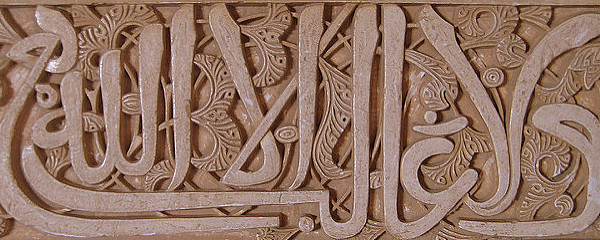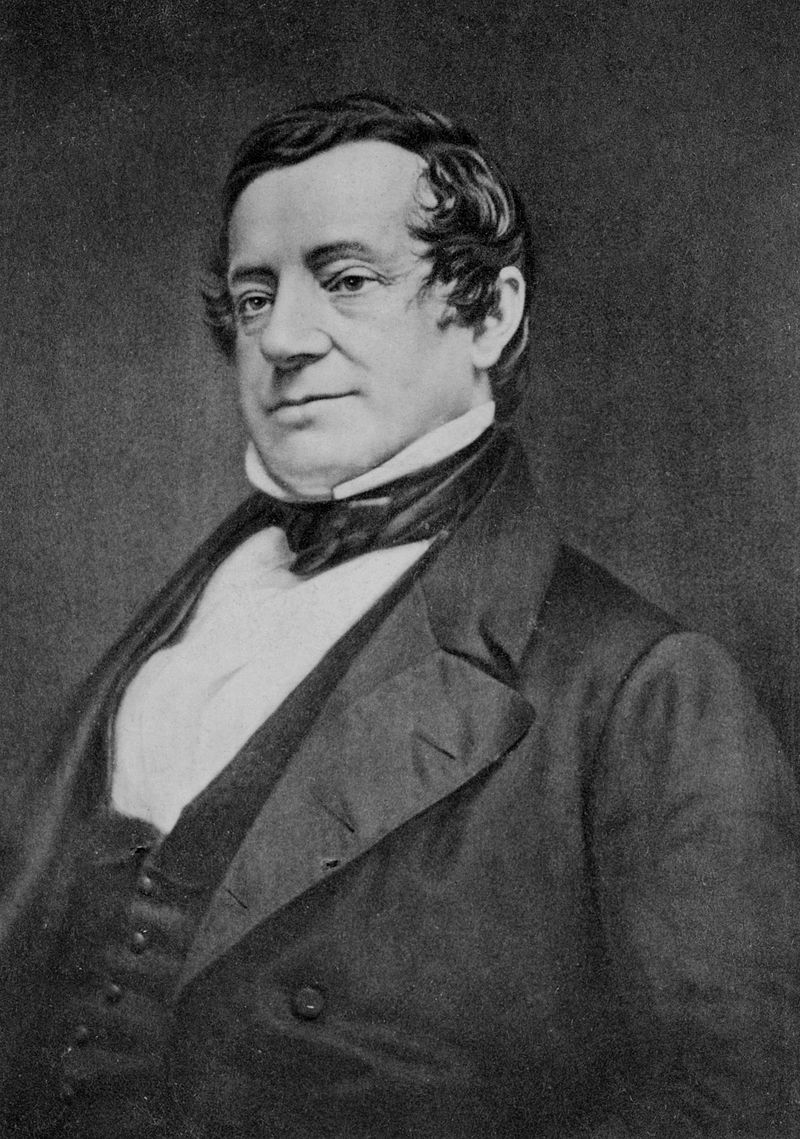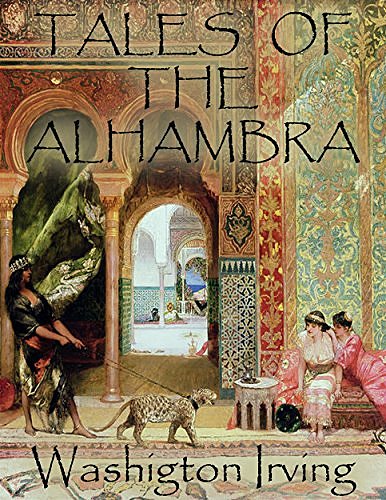
('La gali ballah' © Shoaib Burq, 2007)
WASHINGTON IRVING’S TALES OF THE ALHAMBRA
by GRAHAM A. LANDON
The Author
As a prelude to my review of Washington Irving’s classic collection of stories Tales of the Alhambra, let me say that I count many Americans among my closest friends, and thus have no desire to render offence. And so it irks me to remark upon the unfortunate but pertinent fact that, in modern times, the American tourist in Europe has often been unjustly portrayed as a humorous, if not derisory figure among some of my countrymen. He displays, according to this hackneyed prejudice, a singular lack of knowledge, let alone respect, for all things European – including her languages, an indifference to her traditions, and an all too ready willingness to vulgarise her venerated customs. Not only do I consider this assessment to be unfair, but also believe it to possess no authority by way of antecedent in the history of tourism, such as that science may exist. It is therefore with great pleasure that I venture to suggest that our present author, by dint of the sheer enthusiasm, perspicacity and sensitivity with which he pursues his narrative, so completely belies this latter-day stereotype as to put fully to shame anyone who should entertain it. How is this?
 Washington Irving enjoys perhaps three main advantages over the modern American author. Firstly, he possesses the obvious but great advantage of not being of our age. He lived at the end of the eighteenth and the beginning of the nineteenth century, well before the era of modern popular tourism, during the time when the ‘grand tour’ was a familiar distraction for wealthy European aristocrats. Secondly, he came from a sufficiently prosperous New York family that he could be counted amongst such elite without being classed as ‘aristocratic’, himself, a title which in any case would have been decidedly un-American. His relative wealth or, more exactly the wealth of his relative, his brother William, together with a sizeable income derived from his appointments in various diplomatic positions, enabled him to travel widely in Europe in the middle part of his life. Thirdly, and this is possibly what distinguishes him most from his modern counterpart, he was eminently well-read in European history and literature, having received from boyhood an extensive education in the liberal arts, interests which followed him for the rest of his life. Together with a knowledge of languages, Irving’s background enabled him to feel at home in almost any country in Europe, and helped to propel him to fame on two continents as a story writer.
Washington Irving enjoys perhaps three main advantages over the modern American author. Firstly, he possesses the obvious but great advantage of not being of our age. He lived at the end of the eighteenth and the beginning of the nineteenth century, well before the era of modern popular tourism, during the time when the ‘grand tour’ was a familiar distraction for wealthy European aristocrats. Secondly, he came from a sufficiently prosperous New York family that he could be counted amongst such elite without being classed as ‘aristocratic’, himself, a title which in any case would have been decidedly un-American. His relative wealth or, more exactly the wealth of his relative, his brother William, together with a sizeable income derived from his appointments in various diplomatic positions, enabled him to travel widely in Europe in the middle part of his life. Thirdly, and this is possibly what distinguishes him most from his modern counterpart, he was eminently well-read in European history and literature, having received from boyhood an extensive education in the liberal arts, interests which followed him for the rest of his life. Together with a knowledge of languages, Irving’s background enabled him to feel at home in almost any country in Europe, and helped to propel him to fame on two continents as a story writer.
The Setting
Everything, then, bode well for this author-cum-diplomat-cum-historian when he arrived in Spain in 1826, ostensibly to find material for writing a historical account of Columbus’ discovery of America, a topic, highly popular with his countrymen and one which was potentially very lucrative. His friendship with a Russian diplomat in Seville, however, gave him the opportunity to make the journey across Andalusia to Granada , and it was there, in that ‘ancient Moorish pile’, among its derelict halls, courtyards and gardens that he spent a brief sojourn in the spring and early summer of 1829.
The faded grandeur of the Alhambra, part fortress, part palace, and situated above the timeless city of Granada, forms the backdrop for most of the tales in Irving’s collection, as do the erstwhile wars between the Moslem rulers of Andalus and their Christian adversaries, which were waged virtually continuously until the capture of Granada by Isabella and Ferdinand in 1492. The overall ambiance of the district and its environs is redolent of a Morisco-Spanish civilization lost since the end of the fifteenth century, when the faith of Islam was expelled from Andalusia and the last vestiges of its secular culture disappeared from European soil. The beauty of the many towers, halls, walkways and gardens of the Alhambra are described in detail throughout this collection of stories, so that the dilapidated appearance of the palace experienced by the author merges into a picture of the Alhambra in its prime, and we are transported back to a more noble, chivalrous and elegant age.
Here, we get a sense of Washington’s eye for detail as he enters the palace for the first time:
We found ourselves in a vast patio or court one hundred and fifty feet in length, and upwards of eighty feet in breadth, paved with white marble, and decorated at each end with light Moorish peristyles, one of which supported an elegant gallery of fretted architecture. Along the mouldings of the cornices and on various parts of the walls were escutcheons and ciphers, and cufic and Arabic characters in high relief, repeating the pious mottoes of the Moslem monarchs, the builders of the Alhambra, or extolling their grandeur and munificence. Along the centre of the court extended an immense basin or tank (estanque) a hundred and twenty-four feet in length, twenty-seven in breadth, and five in depth, receiving its water from two marble vases…. Great numbers of gold-fish were to be seen gleaming through the waters of the basin, and it was bordered by hedges of roses.
The Characters
Irving is at pains to describe the motley array of real-life characters who inhabit the ancient palace, beginning with the excellent Tia (Aunt) Antonia, who fulfils the rôle of guardian and châtelaine of the Alhambra, and whose niece, the ‘black-eyed’ Dolores, proves to be a principal story-teller as well as Irving’s handmaid. The other resident female purveyor of tales is Maria Antonia Sabonea, known as ‘la Reyna Coquina’ (‘the Cockle-Queen’), a small, fairy-like old woman reminiscent to Irving, in her command of stories, of Scheherezade, although, being ugly of countenance, bearing no comparison in appearance.
Mateo Ximenes, a thirty-five-year-old ex-soldier whom Irving encounters upon first entering the fortress, supplements the provision of historical fact, fairy-tale and legend which make up the corpus of the collection. Declaring himself to be ‘a son of the Alhambra’ – his family having inhabited the ruin for some generations – Mateo piques Irving’s interest: ‘the very tattered garb of my new acquaintance assumed a dignity in my eyes. It was emblematic of the fortunes of the place, and befitted the progeny of a ruin.’ With that, Mateo becomes the author’s self-appointed guide and ‘cicerone’ and as we read the tales we begin to see him as Sancho Panza to Irving’s Don Quixote.
The principal and recurring historical character in the tales is Boabdil, the last Moorish king of Granada who ‘won the hearts of his people by his affable and gracious manners’. In the tale entitled ‘Mementoes of Boabdil’, Irving follows the route by which the deposed Muslim king finally quits the Alhambra for the neighbouring Alpuxarra mountains, having surrendered the keys of the fortress to the Catholic King Ferdinand and having heard the reproachful words of Ayxa, his mother, censuring him for his irresolution in failing to defend to the death the last Muslim kingdom in Spain. Boabdil exclaims aloud his desolation upon seeing from afar the paradise he is leaving for the last time, the author reminding us that Boabdil’s cry is still known as el último suspiro del Moro (the last sigh of the Moor).
Almost as famous as Boabdil are the ghostly phantoms of four richly dressed Muslim cavaliers, Boabdil’s personal bodyguard. These are the Abencerrages, ‘descended from the countrymen of the Prophet’ and reputed to have been ‘perfidiously massacred’ following Boabdil’s defeat. Beheaded in the Court of Lions, these gallant soldiers are now said to haunt the hall which bears their name:
…there was often heard at night, in the Court of Lions, a low confused sound, resembling the murmuring of a multitude; and now and then a faint tinkling, like the distant clank of chains. These sounds were made by the spirits of the murdered Abencerrages, who nightly haunt the scene of their suffering and invoke the vengeance of Heaven on their destroyer.
Unlike many collections of short stories, Irving’s book is not merely a selection of random tales, but is rather an intricate network of interconnected fables, many forming stories within stories, some supplemented by the author’s own imagination, and some derived from his actual experiences at the location. Most, however, have been handed down through the generations and are gleaned from the living memories of the impecunious inhabitants of the derelict palace.
The tales, some fiction some non-fiction, comprise a rich amalgam of contrasts: wealthy kings and princes, destitute beggars; noble warriors, dangerous bandoleros; Moslem faqirs, Christian friars; imprisoned princesses; even free-flying swallows, talking birds and animals, and ghostly apparitions. In this way it is reminiscent of the fairy-tale style of Irving’s other works, such as Sleepy Hollow. Above all the author has a predilection for amorous romance: affairs, both successful and unsuccessful, between beautiful señoritas and handsome cavaliers of all stations of society abound. Another favourite theme is that of concealed Moorish treasure, sequestered around the Alhambra and waiting to be discovered by a variety of local characters by means of secret signs or magical enchantment, and providing a classic type of rags-to-riches story.
It is impossible to summarise all of the stories, but ‘The Legend of the Three Beautiful Princesses’ epitomises the romantic charm typical of the entire collection, and illustrates how one story gives rise to a sequel. The three princesses in question, Zayda, Zorayda and (the youngest) Zorahayda, are the triplet daughters of a Muslim king of Granada. On the advice of astrologers who urged him to be watchful as his daughters approach marriageable age, the king locks the three girls in the fortress of Salobreña where they are guarded by their elderly duenna – or governess, ‘the discreet Kadiga’. From the vantage point of their tower, the sisters look down upon three captive Spanish cavaliers ‘in the flower of youth’ and yearn to escape from their imprisonment to be with them:
“Did ever nobler being tread the earth than that cavalier in crimson?” cried Zayda, the eldest of the sisters. “See how proudly he bears himself, as though all around him were his slaves!” “But notice that one in green!” exclaimed Zorayda. “What grace! what elegance! what spirit!” The gentle Zorahayda said nothing, but she secretly gave preference to the cavalier in blue.
Their feelings are reciprocated by the Christian cavaliers when they catch sight of the young ladies on their way to their imprisonment at Granada and by chance, the king has also ordered his daughters’ return to Granada so that he might keep a closer eye on them, locking them in a tower in the Alhambra.
Kadiga eventually arranges the escape of the princesses and the cavaliers, but only the two eldest sisters dare to leave their prison and flee to Cordoba with their lovers. The youngest, Zorahayda, stays behind and languishes sadly in imprisonment in the Alhambra, obedient to her father but regretting the abandonment of her lover. The reader is left to discover the eventual fate of Zorahayda in the sequel, ‘The Rose of the Alhambra’.
Irving’s tales have to be read to be truly appreciated, but I hope the reader feels this taste to be sufficiently inviting that they are encouraged to read the whole book. A visit to the Alhambra, itself, is also advised, for there can be no other way to fully understand its mystical charm. I myself visited the palace in my former years, though it was in the guise of the much berated modern tourist – with a conspicuous lack of knowledge about its history and its prior inhabitants. Only later did I discover Irving’s stories and come to understand the truly romantic wonder of the place.
~

Graham Landon lives in Hailsham in East Sussex. He taught for thirty-three years in secondary schools and is a graduate of Cambridge University. Recently, he completed a PhD in Classical Studies at the University of Kent. He is now pursuing a writing career and has had magazine articles published on topics of historical and literary interest. At present he is writing a novel set in fifth-century BC Athens. Graham is a keen follower of sport, especially tennis, which he plays regularly.



Fascinating article, Graham. I visited the Alhambra last month having read irving’s Tales, and the stories undoubtedly enhance the experience. To visit the place as Irving did in its derelict state must have been amazing. At least I had Irving’s characters wandering about in the back of my mind to heighten the romanticism. I think it is now the second most visited site in Europe. Wonderful and poetic but very very busy.